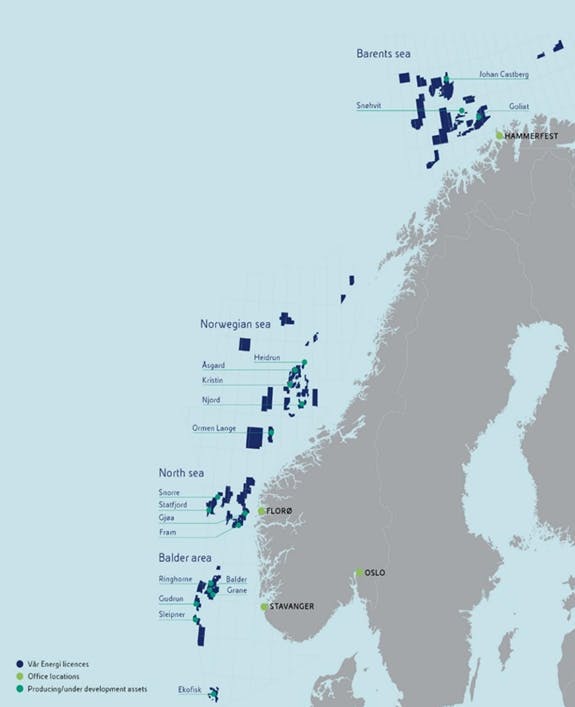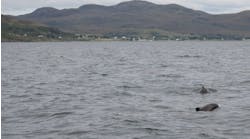Multiple tiebacks planned to North Sea Gjøa platform
Vår Energi is working on multiple new cluster projects in the Norwegian North Sea and Barents Sea, the company said in a results statement.
In the Gjøa area of the North Sea, which the company inherited following Eni’s takeover of Neptune Energy, the partners aim to take an investment decision by the end of this year on a fast-track development of the Cerisa, Gjøa North, Kyrre and Ofelia discoveries via tiebacks to the Gjøa semisubmersible platform.
Collectively, the accumulations contain an estimated 110 MMboe of recoverable reserves.
In the Ekofisk area of the southern Norwegian North Sea, the company is a partner in the ConocoPhillips Skandinavia-led Ekofisk PPF (previously produced fields) project. Again, FID is expected by year-end.
Elsewhere in the southern part of the Barents Sea, Vår Energi and partner Equinor have made three successive oil discoveries in the Goliat Ridge region. To determine the remaining potential and to speed up the development process, new 3D and 4D seismic survey will be acquired this summer.
In addition, two more exploration/appraisal wells are set to spud by the end of September.
Vår Energi is a partner to Equinor in the Johan Castberg project in the Barents Sea. The FPSO recently received first oil, and the partnership is already working on an incremental development tying in various discoveries made nearby in recent years.
The first phase of the Johan Castberg Cluster 1 development, focused on the Isflak field, could be sanctioned within a year. Phase 2 would develop the Snøfonn/Skavl fields; in total, the partners have identified 250 MMbbl to 550 MMbbl of additional recoverable resources in the area.
As for established projects where Vår Energi is a co-venturer, work continues to restore production at the Sleipner B platform in the North Sea following a fire in 2024. Operator Equinor is aiming for a partial startup in September 2025 followed by a return to full production during the first half of 2026.
Operations at the Njord field complex in the Norwegian Sea have been impacted by issues connected with the gas compression system. The nearby Åsgard area also experienced reduced production due to constrained gas-injection capacity and the unplanned repair of firewater pumps.
However, all these problems have now been resolved.




